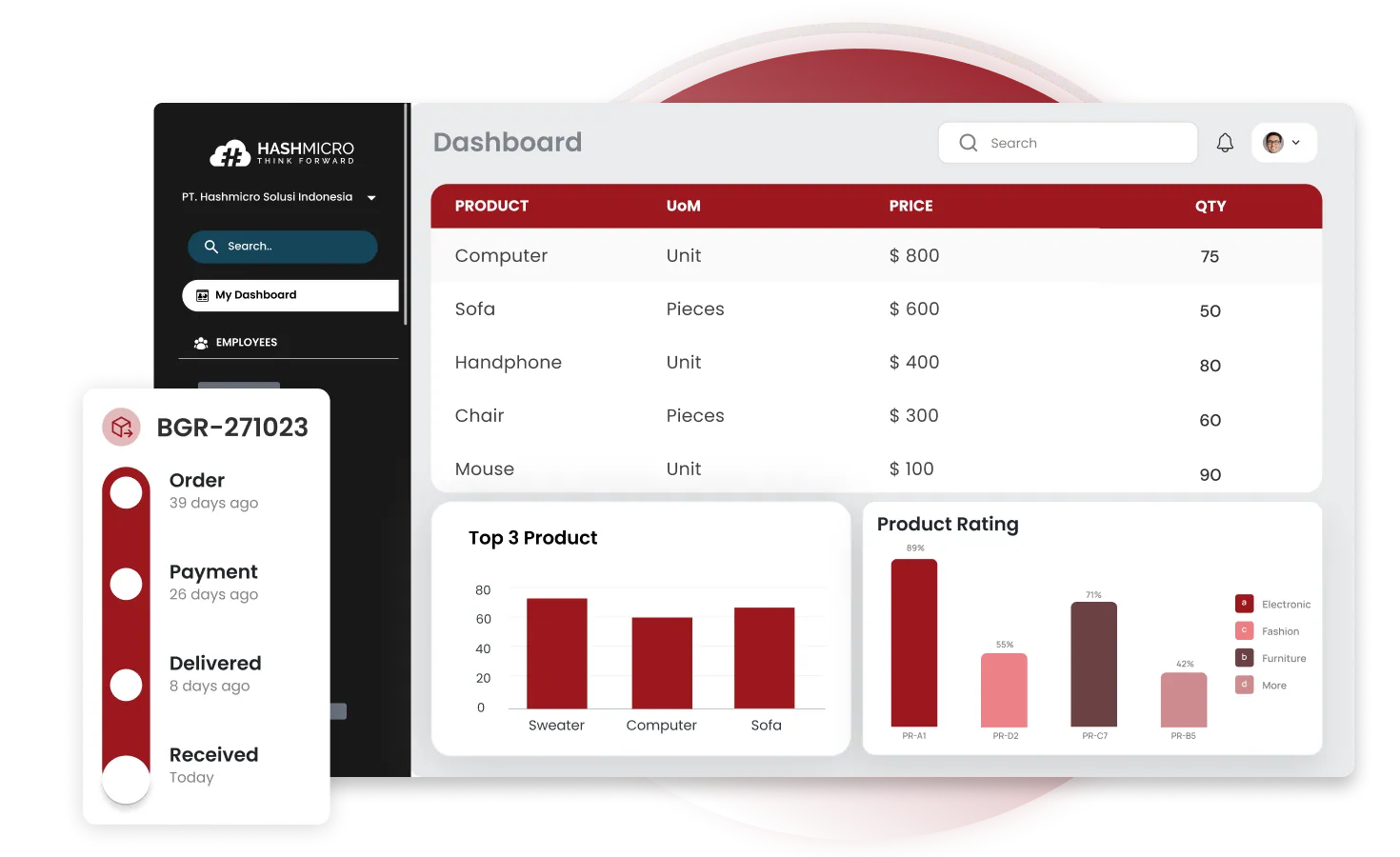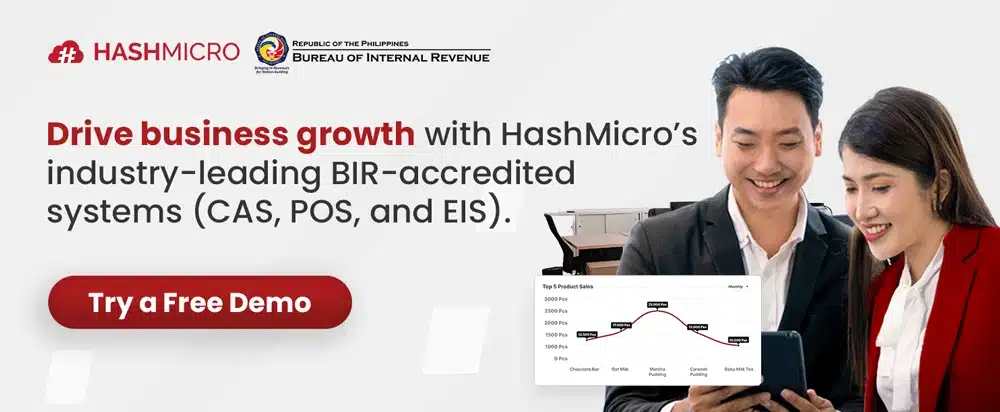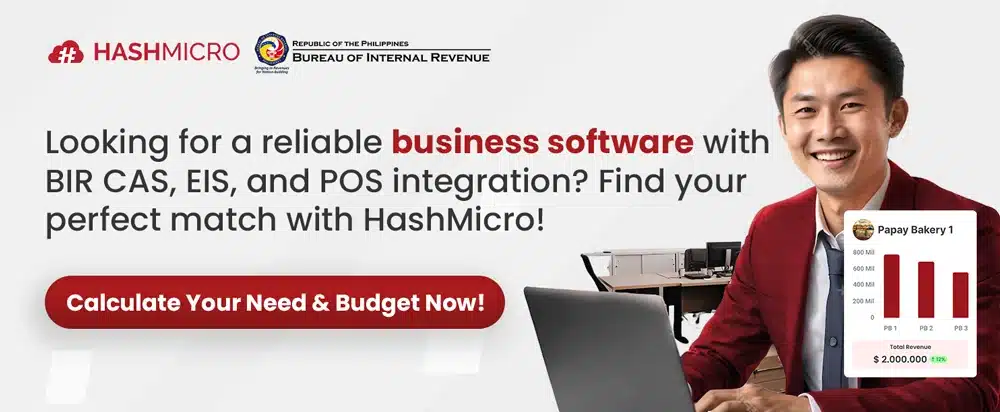How much control do you have over your procurement process? Many companies struggle with fragmented sourcing, limited visibility, and supplier misalignment, issues that can silently drain budgets and create long-term risks.
In fact, a McKinsey survey found that 45% of companies only have visibility into their first-tier suppliers. This lack of insight can lead to inefficiencies, compliance issues, and missed opportunities for collaboration, all of which negatively impact the bottom line.
That’s where the source-to-pay (S2P) process comes in. By integrating supplier selection, contract management, purchasing, and payment into one unified flow, businesses can boost transparency and make smarter, faster decisions.
Maraming kumpanya sa Pilipinas ang nagsisimulang gumamit ng digital procurement tools para mapabuti ang proseso at relasyon sa mga supplier. In this guide, we’ll walk you through what S2P really is, how it differs from similar processes, and how your business can benefit from adopting it.
Table of Contents
Key Takeaways
|
What is a Source-to-Pay?
Source-to-Pay (S2P) is an end-to-end procurement process that covers everything from identifying sourcing needs to paying suppliers. It begins with demand planning and supplier selection, followed by contract negotiation, order management, and ends with invoice processing and payment.
This structured process is designed to enhance procurement control and visibility. With S2P, companies can consolidate supplier information, automate purchasing workflows, and streamline payment processing within a single, integrated system.
A key advantage of source-to-pay is that it doesn’t merely stop at ordering goods or services. It includes strategic sourcing, spend analysis, vendor evaluation, and risk management, providing a comprehensive view of procurement operations.
Modern source-to-pay solutions leverage automation and analytics to simplify tasks, such as classifying spend data and identifying cost-saving opportunities. By reducing manual work and improving data accuracy, S2P empowers businesses to focus more on strategic decisions that drive value.
Source-to-Pay vs. Procure-to-Pay: Key Differences

While both Source-to-Pay (S2P) and Procure-to-Pay (P2P) processes are crucial in procurement, they serve different purposes and scopes. Understanding the distinction between these two systems helps businesses choose the right approach depending on their operational goals.
S2P is a comprehensive process that begins with sourcing suppliers and ends with making payments. It integrates supplier discovery, contract negotiation, procurement, and payment into one seamless workflow. On the other hand, P2P focuses only on the transactional phase (procurement and payment) after the supplier has already been selected.
The table below summarizes the core differences:
| Feature | Source-to-Pay (S2P) | Procure-to-Pay (P2P) |
| Scope | Full end-to-end process from sourcing to payment | Starts at procurement and ends at supplier payment |
| Focus Area | Strategic sourcing, supplier management, contract negotiation | Purchase orders, invoice processing, payment |
| Function | More strategic: includes supplier evaluation and selection | More operational: focuses on order and invoice workflow |
| Use Case | Suitable for organizations aiming for cost optimization and long-term supplier value | Ideal for companies focusing on transactional efficiency |
| Tools Needed | Requires source-to-pay software with sourcing and analytics features | Typically managed via procurement system or P2P tools |
While both approaches can drive operational improvement, Source-to-Pay provides a more strategic, value-driven framework, especially for businesses with complex supply chains or evolving vendor needs.
With the rise of AI in procurement and integrated digital tools, organizations can now use Source-to-Pay not just to automate tasks, but to make smarter, data-driven sourcing decisions. For companies looking to scale, reduce maverick spending, or centralize procurement functions, S2P is a more future-proof approach than P2P alone.
Essentially, Procure-to-Pay is just one component within the broader Source-to-Pay process, which encompasses both strategic sourcing and transactional procurement.
The 7 Key Stages of Source-to-Pay
The source-to-pay process is a structured cycle designed to help businesses streamline procurement and build stronger supplier relationships. Understanding each stage is essential to optimizing workflows, improving cost efficiency, and ensuring compliance.
Here’s a breakdown of the seven key stages in a standard source-to-pay system:
- Spend analysis
The process starts with analyzing current and historical spending. By identifying spending patterns, businesses can uncover cost-saving opportunities, consolidate vendors, and negotiate better contracts.
- Sourcing
This stage involves identifying suitable suppliers based on business requirements, price, and performance. Strategic sourcing tools help automate and simplify supplier selection, enabling better decision-making.
- Supplier selection and qualification
Companies evaluate potential vendors, ensuring they meet standards in terms of compliance, quality, delivery capacity, and pricing. This reduces risk and improves procurement outcomes.
- Contract management
Once a supplier is chosen, the next step is to draft, negotiate, and manage contracts. Automated procurement system features ensure transparency, consistency, and faster approval processes.
- Procurement
With contracts in place, companies initiate purchase requests and process purchase orders. At this stage, purchasing software helps standardise workflows, reduce manual tasks, and eliminate bottlenecks.
- Invoice and payment
Invoices from suppliers are validated and matched against purchase orders and delivery receipts. After approval, payment is issued based on pre-defined terms. This ensures financial accuracy and timely processing.
- Supplier performance and risk management
Post-transaction, businesses assess supplier performance using predefined KPIs. Monitoring delivery times, quality, and responsiveness ensures long-term value and flags areas that need improvement.
Advantages of Source-to-Pay

Adopting a source-to-pay system provides businesses with more than mere automation. It enhances visibility, control, and strategic value for every procurement activity. Here are some of the key benefits: advantages:
- Centralized data and improved visibility
All procurement activities are managed in a unified system, making it easier to track spending, monitor supplier performance, and avoid redundant purchases. This transparency empowers smarter, faster decision-making.
- Enhanced cost control
A robust source-to-pay software helps businesses analyze spending behavior and identify cost-saving opportunities. By consolidating suppliers and leveraging data, companies can negotiate better deals and reduce procurement costs.
- Stronger supplier management
From selection to evaluation, S2P solutions improve supplier collaboration by enabling clearer communication, performance tracking, and compliance monitoring. This results in more stable and strategic vendor relationships.
- Streamlined procurement operations
Automated processes reduce manual workloads, minimize errors, and accelerate the entire procurement cycle. Workflows become more efficient, enabling teams to focus on high-value activities rather than paperwork.
- Better compliance and risk reduction
With audit trails, real-time alerts, and standardized workflows, source-to-pay solutions help businesses stay compliant with internal policies and regulatory standards, reducing the risk of costly oversights.
If you’re looking to maximize these benefits with smart automation and real-time control, now’s the time to explore a digital solution. Click the banner below to discover how much it would cost to implement HashMicro’s procurement system for your organization.
The Value of Supplier Collaboration in Source-to-Pay
The Source-to-Pay (S2P) process is also about fostering strong collaboration between organizations and their suppliers. As supply chain disruptions are becoming more and more unpredictable and frequent, maintaining stable and productive supplier relationships has never been more critical.
Adapting to supply chain challenges
Since the pandemic, businesses worldwide have renewed their focus on supplier collaboration. This shift has allowed them to identify potential issues early, engage suppliers more effectively, and act swiftly to minimize risks. Building these partnerships can significantly enhance a company’s ability to weather disruptions.
Key benefits of supplier collaboration
A McKinsey survey titled “Taking Supplier Collaboration to the Next Level” reveals the profound benefits of continuous collaboration with suppliers.
The survey reports that a strong supplier collaboration can lead to higher growth, lower operating costs, better profitability, and a mutual competitive advantage for both the business and its suppliers. This partnership fosters a win-win situation where both parties benefit from improved performance, increased efficiency, and shared success, ultimately driving long-term growth and sustainability.
These businesses outperform their industry peers by leveraging supplier collaboration as a key driver of success.
The role of source-to-pay software in enhancing collaboration
Source-to-Pay software is designed to streamline collaboration by providing transparent and accessible data. With built-in tools that enable effective communication between buyers, planners, and suppliers, the software facilitates smoother workflows. This enables organizations to collaborate on improvement plans, innovation strategies, or even dispute resolutions efficiently.
Accurate supplier information is crucial. It enhances supplier management and fosters innovation. Collaborating with suppliers leads to process improvements, cost savings, and better quality. Close partnerships help identify innovation opportunities, streamline operations, and ensure high standards, resulting in increased efficiency and customer satisfaction.
Fostering strong supplier collaboration through an effective source-to-pay system can significantly enhance a business’s performance.
Improving Compliance and Managing Supplier Risk

Procurement compliance ensures that activities across procurement, supply chains, and vendor relationships meet legal, ethical, and risk management standards. It is essential for maintaining operational integrity and safeguarding businesses from potential risks.
Procurement managers handle responsibilities like relationship management, risk mitigation, and adhering to regulations. With so many duties, it can be challenging to stay on top of every detail without the right tools to streamline processes.
For example, managing contracts, preserving records, and ensuring compliance can be overwhelming. This is where Source-to-Pay (S2P) software plays a key role in automating compliance checks, reducing the risk of penalties, and improving efficiency across procurement operations.
By integrating S2P software, businesses can simplify compliance, manage contracts more effectively, and minimise legal risks. This ensures smoother operations and more time to focus on strategic goals.
Key considerations for managing supplier risk
- Identifying supplier risks:
Start by categorising potential risks, such as financial instability, geopolitical issues, or natural disasters that could affect your suppliers and, ultimately, your business operations.
- Evaluating supplier performance:
Assess each supplier’s risk profile, factoring in their financial stability, reputation, and past performance. This evaluation helps ensure that you work with reliable partners.
- Collaborating with suppliers:
Engage with suppliers to develop joint strategies for mitigating risks. Effective collaboration can lead to innovations that benefit both parties, enhancing overall supply chain resilience.
- Diversifying your suppliers:
Avoid putting all your eggs in one basket. By diversifying your supplier base, you reduce reliance on a single source, minimizing the risk of major disruptions in your supply chain.
- Securing contracts with safeguards:
Ensure contracts contain clear clauses for risk management, such as penalties, dispute resolution terms, and contingency plans. This protects your business from unforeseen challenges.
- Enhancing supply chain visibility:
Increase visibility across your supply chain to detect and respond to potential risks early. Tracking product movements and supplier activities helps ensure smoother operations and quicker action when needed.
- Leveraging data and analytics:
Use data analytics to gain deeper insights into your suppliers’ performance and dependencies. Real-time analytics can help identify vulnerabilities and support smarter decision-making in procurement.
Automate Your Source-To-Pay with Hashmicro Procurement Software

HashMicro’s Procurement System is the ideal solution for businesses in the Philippines that are aiming to enhance their procurement processes. This software helps companies minimise errors, improve speed, and provide real-time data for better decision-making, leading to efficient and cost-effective procurement operations.
In addition to the previously mentioned features, HashMicro’s procurement system includes several advanced tools that help businesses optimise their procurement workflows:
- E-procurement: Manage tenders and request quotations online, streamlining and accelerating the procurement process.
- OCR for RFQ: Use Optical Character Recognition (OCR) to quickly scan and process RFQ documents, reducing the risk of manual errors and saving valuable time.
- Automatic vendor rating: Automatically assess vendor performance based on criteria like punctuality, pricing, and completeness, ensuring that businesses select the best suppliers.
- Periodic vendor rating review: Regularly review vendor performance to maintain high standards and drive continuous improvement.
- KPI target per purchaser: Set individual targets for each purchaser, allowing businesses to track their performance and meet procurement objectives efficiently.
- Cost savings tracking and reporting: Monitor and report cost savings from procurement efforts, helping businesses measure the financial impact of their procurement activities.
- Vendor promotion program management: Manage promotions from vendors to strengthen supplier relationships and secure better deals.
- Custom printout in RFQ: Customize RFQ printouts based on different types of purchases, ensuring clarity and precision in requests.
- Budget tracking & limit per purchase: Track budgets and set purchase limits within the system, helping businesses control spending and avoid overspending.
By leveraging HashMicro’s advanced procurement tools, such as e-procurement, businesses can streamline their tendering processes and enhance supplier management. Additionally, features like regular vendor rating assessments and KPI tracking help create a more efficient and controlled procurement workflow.
Conclusion
Source-to-Pay (S2P) systems are essential for streamlining the procurement process, from identifying and sourcing suppliers to processing payments. A comprehensive S2P solution enables businesses to gain greater visibility, improve supplier relationships, and ensure compliance with relevant regulations, all while optimizing procurement efficiency.
HashMicro’s Procurement System offers an integrated solution with features such as e-procurement, vendor rating reviews, and budget management. Trusted by over 2,000 clients across Southeast Asia, HashMicro helps businesses optimise their procurement process and improve supplier management.
Ready to transform your procurement process with automation and efficiency? Book a free demo with HashMicro today and discover how its procurement system can help you streamline operations, improve supplier relationships, and achieve your business goals.

FAQ About Source-to-Pay (S2P)
-
What are the benefits of automating the Source-to-Pay process?
Automating this process reduces manual tasks, minimizes errors, speeds up procurement, enables real-time monitoring and reporting, improves decision-making, and ensures compliance. It also reduces administrative workload, allowing teams to focus on strategic efforts and tasks.
-
How does Source-to-Pay help in managing supplier risks?
Source-to-Pay systems enable continuous assessment of supplier performance, identifying potential risks early. By automating evaluations, businesses track performance, assess financial stability risks, and take proactive measures to mitigate disruptions.
-
What factors should a business consider when selecting a Source-to-Pay solution?
When choosing a Source-to-Pay solution, businesses should evaluate scalability, integration with existing ERP systems, user-friendliness, and automation capabilities. It’s crucial to assess the software’s support for compliance, risk management, data handling, and supplier relationships.
-
Is Source-to-Pay suitable for small businesses or only large enterprises?
Source-to-Pay solutions scale for all business sizes. Large enterprises can benefit from comprehensive S2P systems for complex procurement, while small businesses can use simplified versions to enhance efficiency, gain supplier insights, and ensure compliance without resource strain.





































